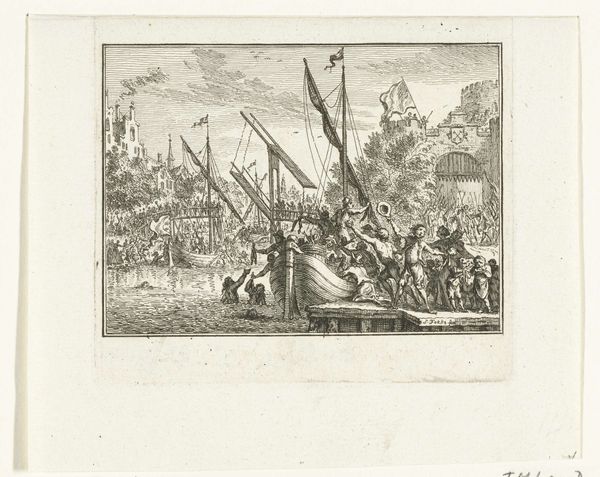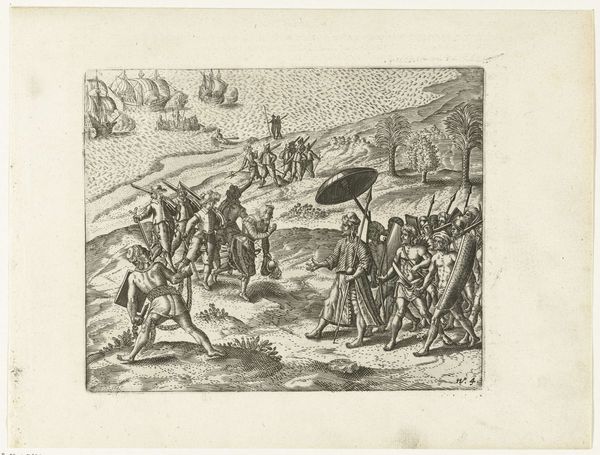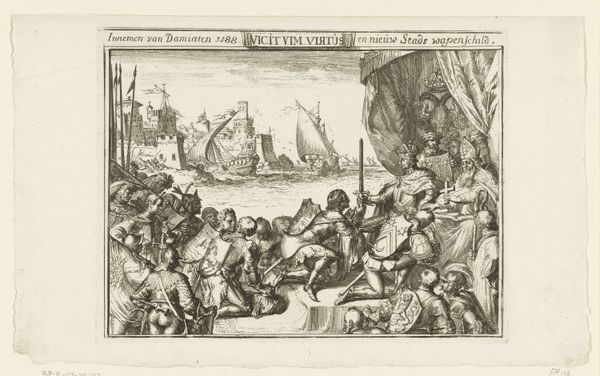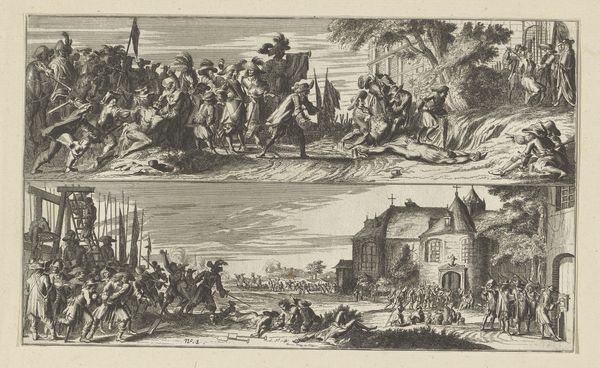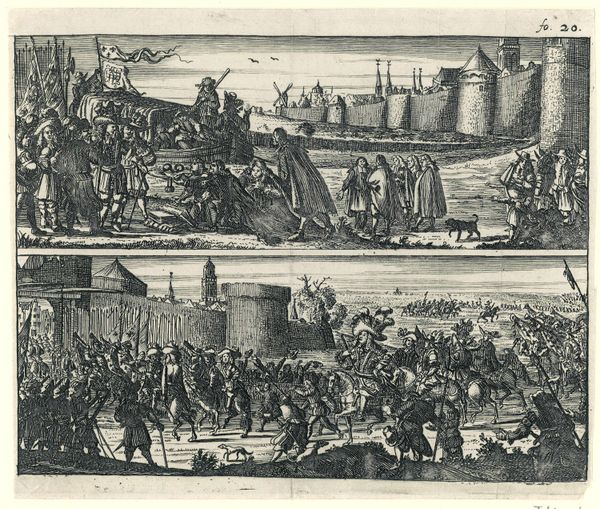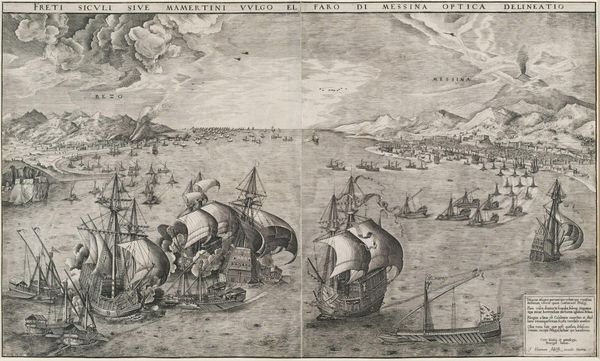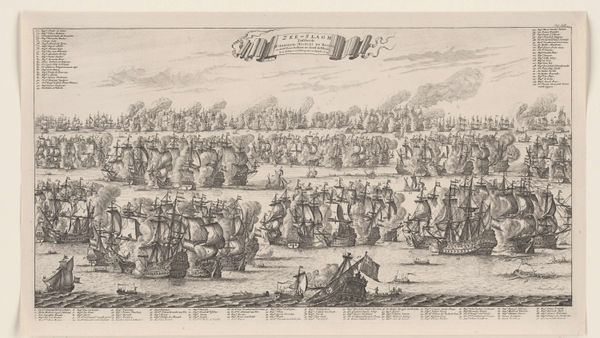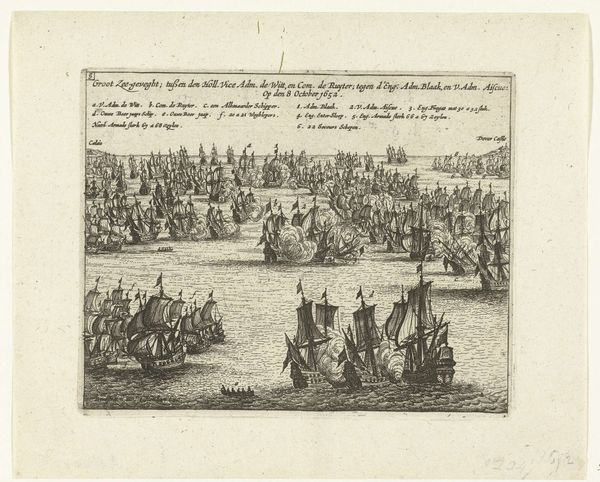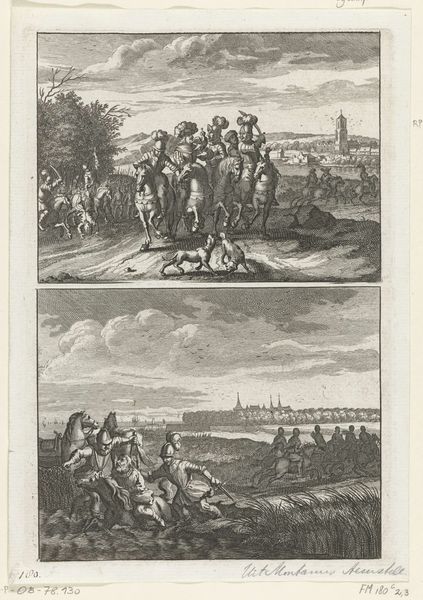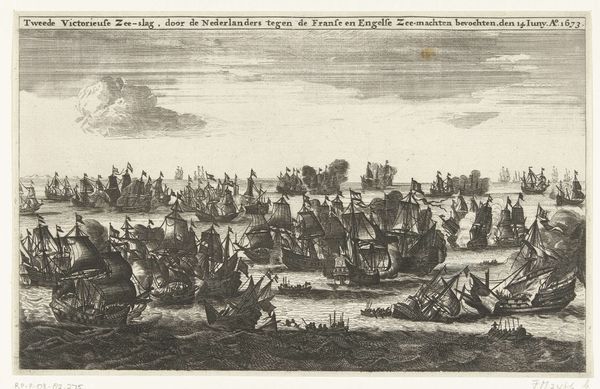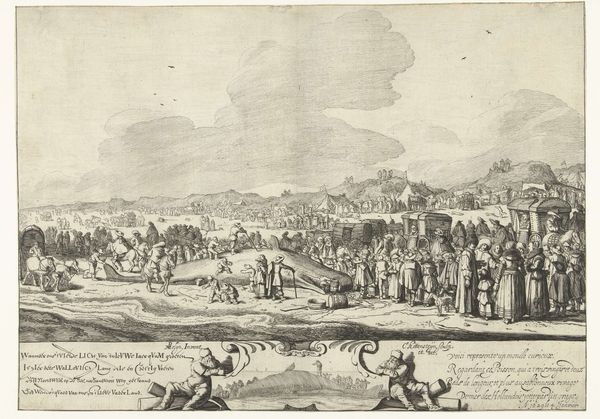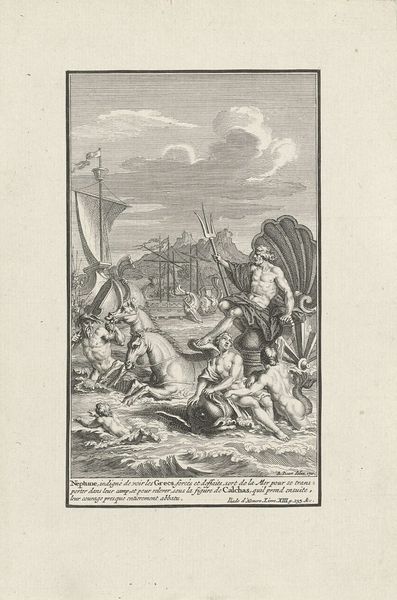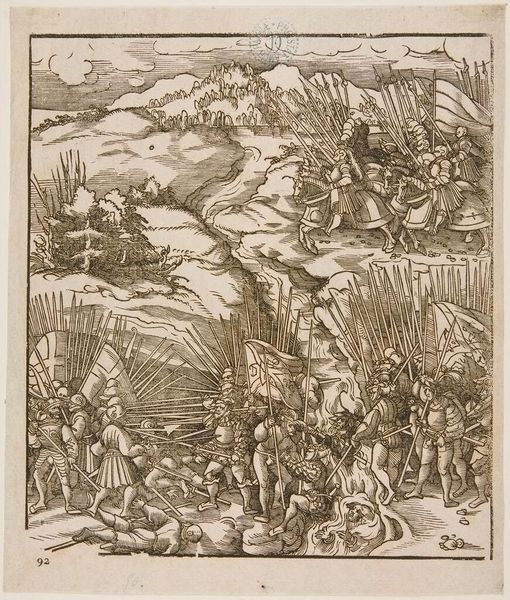
print, engraving
#
narrative-art
#
baroque
# print
#
figuration
#
genre-painting
#
history-painting
#
engraving
Dimensions: height 190 mm, width 150 mm
Copyright: Rijks Museum: Open Domain
Editor: This print, titled "Europeans Tortured and Killed by the Chinese," was created by Johannes van Baden in 1675. It is an engraving that illustrates two scenes. The violence on display is disturbing, but the rendering, in simple lines, lends it a remove. What catches your attention about it? Curator: As a materialist, I focus on the labor and process involved in creating such an image, and the social context it reflects. Engravings were a key form of mass communication in the 17th century, a means of disseminating information and shaping public opinion. Consider how the print medium itself, as a repeatable and reproducible commodity, contributes to the spread of these propagandistic narratives. What do you think the effect of distributing this imagery to a wide audience could have been? Editor: That’s a really interesting perspective. It never occurred to me to think about it in terms of mass media. The details of torture almost feel like information, but now that you mention the effects on audiences…well, I guess this print serves to demonize the "other," stirring up xenophobia and prejudice. Were these kinds of depictions common then? Curator: They were, absolutely. Consider the market for these images. Who was buying and consuming them? Likely it was the burgeoning merchant class in Europe who had invested in colonial ventures, eager to confirm their prejudices and perhaps soothe their consciences about exploitative trade practices. And notice the details – are they accurate? Probably not. They are fabricated and meant to inspire fear. It seems as though the making and distribution of this print reveals the workings of power in early global capitalism. Editor: So, analyzing this image, not just for what it depicts, but for how it was made and distributed, reveals so much more about the historical and social forces at play. It moves it away from just a depiction of torture to evidence of cultural attitudes, almost. Curator: Exactly. Examining the means of production alongside the social context, helps us to challenge the apparent simplicity of the image. It highlights how this image functions as a piece of material culture, actively shaping understanding and reinforcing power dynamics. Editor: This gives me so much to think about, from production to purpose, not just aesthetic style. Thanks for that!
Comments
No comments
Be the first to comment and join the conversation on the ultimate creative platform.
